Color is all around us, and in the garden it is one of our most powerful resources. It is also a unique way of expressing ourselves. When we decorate our houses, we tend to use color schemes — whether following personal preference or current trends. In our gardens, we are more eclectic and use plants with a variety of flower and foliage colors.
Gertrude Jeckyll, an English Victorian-era gardener, demonstrated how to exploit color by designing her borders around a specific color theme. In the late 1800s, the artist Monet created parts of his garden at Giverny as a living palette where single species were massed in beds — the purple and lavenders of the iris, the pink and red of the peony and the blues of the delphiniums.
Here are some ideas that show us just how stunning restricting color palettes can be.
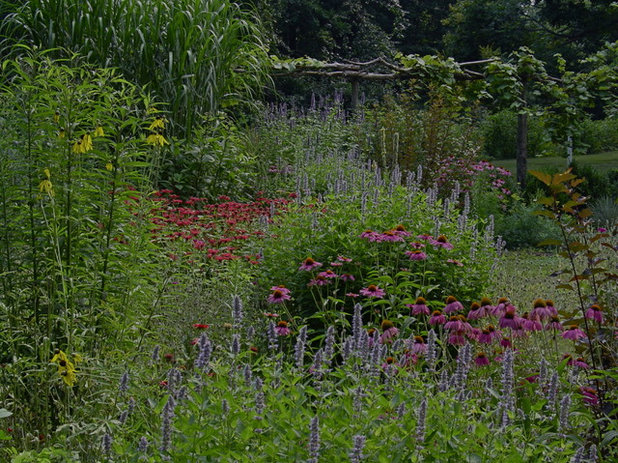
Brian Maloney Design Associates
With the expeditions of the great plant hunters of the Victorian age, gardens in the Western world were filled with a multitude of new and exciting plants. It is no wonder that the popularity of the herbaceous border came to the fore. In this traditional-style border, we can see how the planting scheme cleverly weaves plants of differing colors and heights, but there is no defined color scheme.
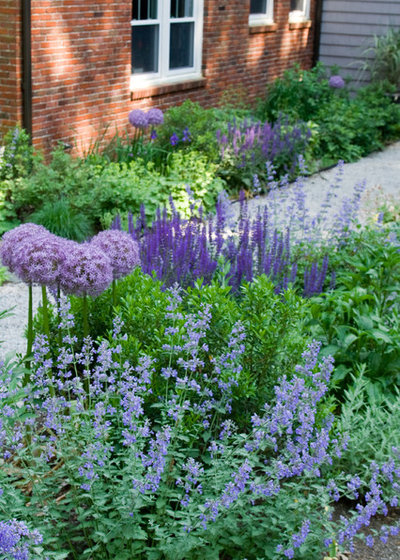
Matthew Cunningham Landscape Design LLC
Where blue meets violet. The next stage in our color-theme borders is using one part of the color spectrum. Here we see a planting of cooler colors with catmint,
Nepeta mussinii, blending with mauve alliums and deep purple salvias.
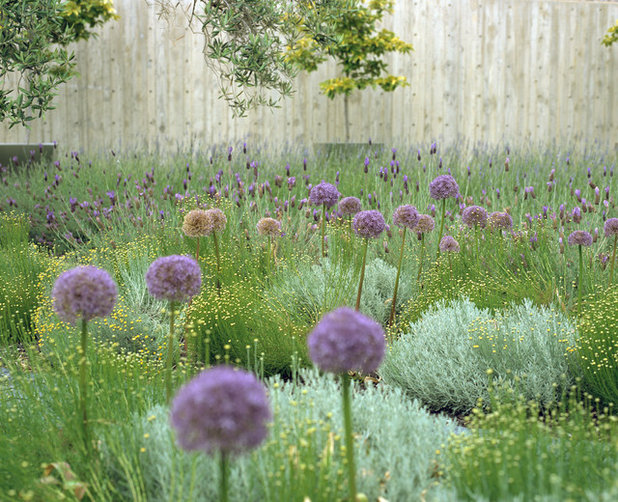
WA Design Architects
Muted colors. Gray and glaucous foliage planted en masse need not be boring. In the last decade, alliums, especially the large globe varieties, have become very popular as accent plants. Here they stand over a mixed planting of 'Cotton Lavender',
Santolina chamaecyparissus, and French lavender,
Lavandula stoechas. Their purple flowers resonate with the butterfly-shape lavender flowers and bring life to the border.

Summerset Gardens/Joe Weuste
Hot pinks. We can see tones of pink used as the main theme within this border, with touches of purple that increase the vigor of the color. The clever use of cooling blues and whites prevents the hot pink from overpowering the border.
 Washed denim.
Washed denim. Blue is a cooling color — think of the sky and the sea and how they affect us. It can be difficult to use on its own, as it can bleach in strong sun and appear to recede in the garden against other colors. Here, the many shades of the hydrangeas blend, creating an amazing spring display.
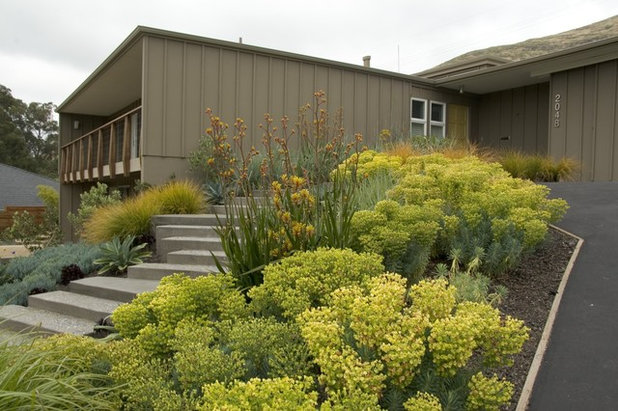
Jeffrey Gordon Smith Landscape Architecture
Warm yellows. Yellows are not easy to use en masse in a garden. Here, using muted yellows from the cooler end of the yellow spectrum works as a background for the brighter colors of the euphorbias and holds the composition together.
Glenna Partridge Garden Design
Refreshing greens. Green is the backdrop of all gardens, yet with a careful choice of plants it can make a wonderful color-theme planting. The foliage in this border is both soothing and refreshing and makes me think of the traditional temple gardens of Japan.





